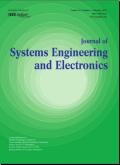异构变化检测中的轻量级误报抑制方法
IF 2.1
3区 计算机科学
Q3 AUTOMATION & CONTROL SYSTEMS
引用次数: 0
摘要
在异构变化检测中,忽视误报抑制问题会导致检测性能下降。本文提出了一种在异构变化检测中处理误报的方法。基于卷积神经网络(CNN)和图卷积网络(GCN)的组合,建立了一个轻量级的双通道网络。卷积神经网络学习多时相图像的特征差异图,而注意力模块则针对不同尺度自适应地融合基于卷积神经网络和基于图的特征。带有新核滤波器的 GCN 可自适应地区分标签相同和不同的节点,从而生成变化图。在两个数据集上进行的实验评估验证了所提方法在解决误报方面的功效。本文章由计算机程序翻译,如有差异,请以英文原文为准。
A Lightweight False Alarm Suppression Method in Heterogeneous Change Detection
Overlooking the issue of false alarm suppression in heterogeneous change detection leads to inferior detection performance. This paper proposes a method to handle false alarms in heterogeneous change detection. A lightweight network of two channels is bulit based on the combination of convolutional neural network (CNN) and graph convolutional network (GCN). CNNs learn feature difference maps of multitemporal images, and attention modules adaptively fuse CNN-based and graph-based features for different scales. GCNs with a new kernel filter adaptively distinguish between nodes with the same and those with different labels, generating change maps. Experimental evaluation on two datasets validates the efficacy of the proposed method in addressing false alarms.
求助全文
通过发布文献求助,成功后即可免费获取论文全文。
去求助
来源期刊

Journal of Systems Engineering and Electronics
工程技术-工程:电子与电气
CiteScore
4.10
自引率
14.30%
发文量
131
审稿时长
7.5 months
期刊介绍:
Information not localized
 求助内容:
求助内容: 应助结果提醒方式:
应助结果提醒方式:


